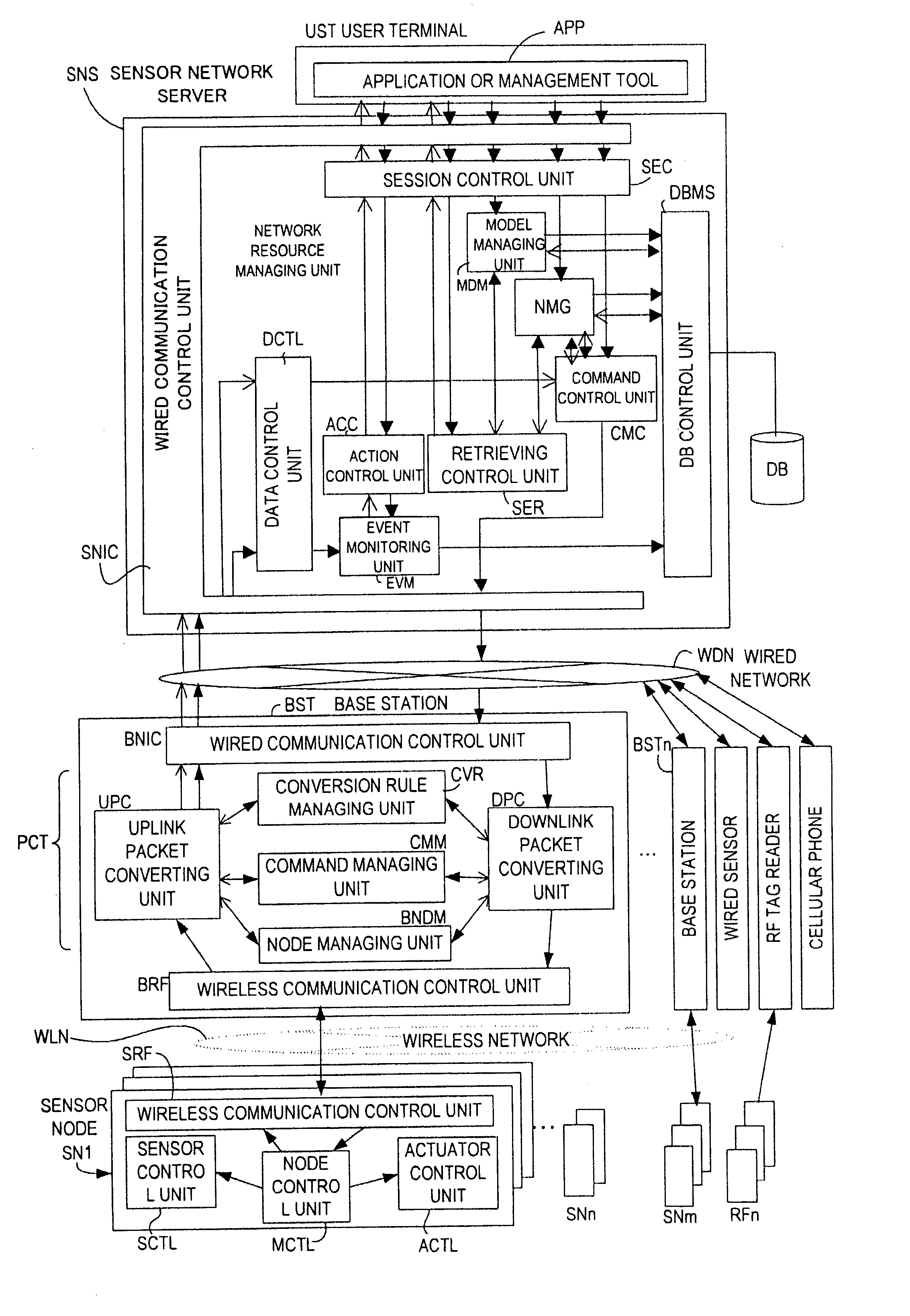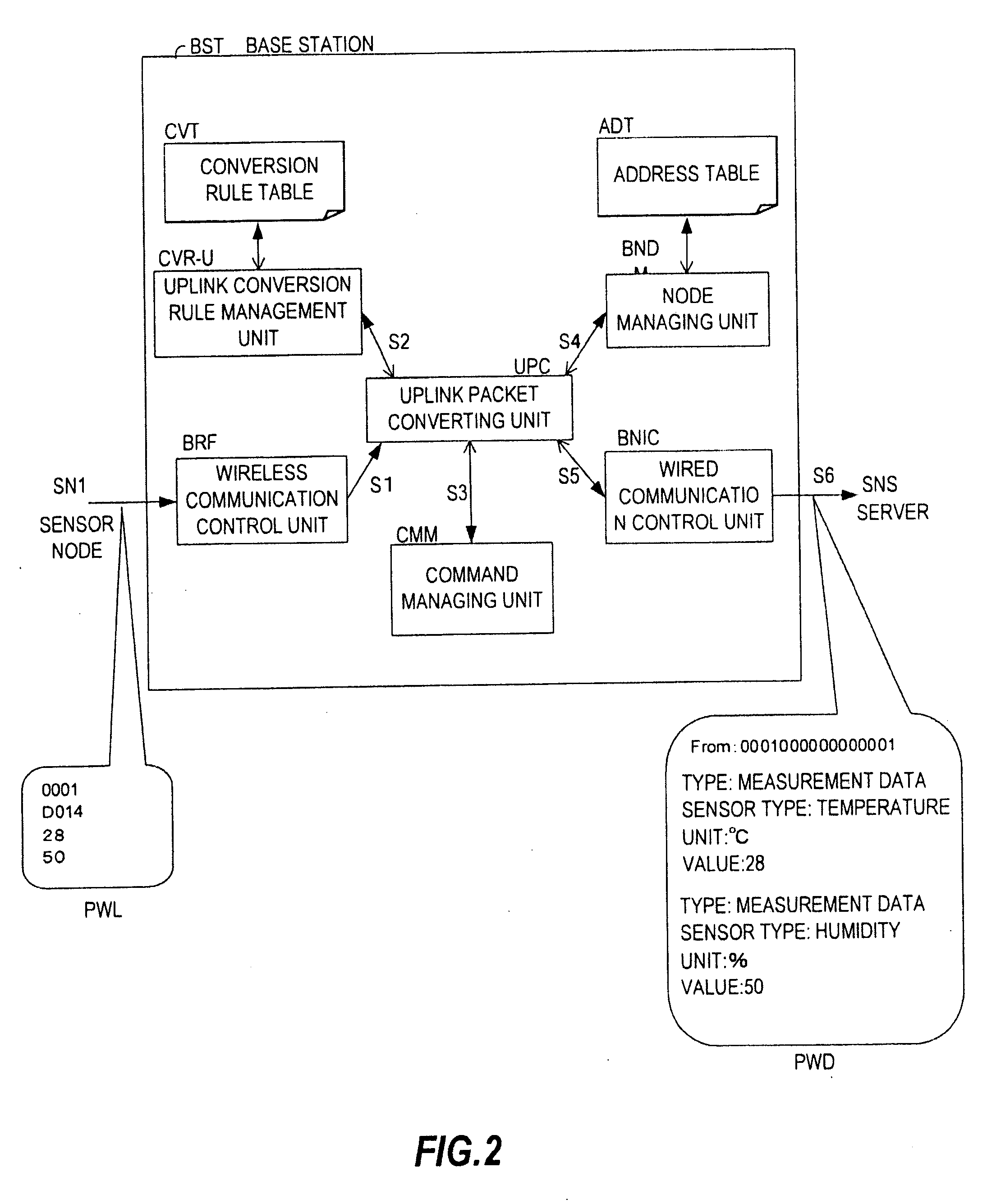Sensor network system, gateway node, and method for relaying data of sensor network system
a sensor network and gateway node technology, applied in the field gateway nodes, and methods for relaying data of sensor network systems, can solve the problems of large amount of labor required for the development and maintenance of application software, large amount of labor required to make the definitions of the outputs of the sensor nodes identical, and difficulty in sharing information between multiple sensor network systems, so as to reduce the load of wireless networks, improve usability, and facilitate data in a server
- Summary
- Abstract
- Description
- Claims
- Application Information
AI Technical Summary
Benefits of technology
Problems solved by technology
Method used
Image
Examples
first embodiment
[0036]FIG. 1 is a block diagram showing an example of a sensor network system according to a first embodiment of this invention. In the sensor network system shown in FIG. 1, sensing data received from sensor nodes SN1 to SNn is transmitted to a base station BST by wireless communication. The base station BST functions as a gateway of the sensor network system to add meaning information to the sensing data. The sensing data to which the meaning information is added by the base station BST is transmitted to a sensor network server SNS via a wired network WDN and used by a user terminal UST.
[0037] The sensor nodes SN1 to SNn shown in FIG. 1 each output sensing data or a preset identifier (ID) by wireless communication. The sensor nodes SN1 to SNn are attached, for example, to predetermined portions of a user for the purpose of monitoring a status of the user. The sensor nodes SN1 to SNn perform wireless communication with the base station BST via a wireless network WLN...
second embodiment
[0131]FIG. 15 shows an example of using sensing data by a large number of sensor network systems, according to a second embodiment.
[0132] A wired network WDN0 is connected to multiple user terminals UST1 and UST2 and to multiple sensor network systems # 1 to #4. The user terminal UST1 runs an application A that uses sensing data of the multiple sensor network systems # 1 to #4. The user terminal UST2 runs an application B that uses the sensing data of the multiple sensor network systems #1 to #4.
[0133] A sensor network system #1 is configured in the same way as the sensor network system of the first embodiment, in which a sensor network server SNS-1 is connected to a base station BST1-1 via a wired network WDN1 and there are a large number of sensor nodes SN1-1 to SN1-N controlled by the base station BST1-1. As in the first embodiment, the base station BST1-1 adds meaning information to an uplink packet PWD destined for the sensor network server SNS-1 and also adds a global ID, wh...
PUM
 Login to View More
Login to View More Abstract
Description
Claims
Application Information
 Login to View More
Login to View More - R&D
- Intellectual Property
- Life Sciences
- Materials
- Tech Scout
- Unparalleled Data Quality
- Higher Quality Content
- 60% Fewer Hallucinations
Browse by: Latest US Patents, China's latest patents, Technical Efficacy Thesaurus, Application Domain, Technology Topic, Popular Technical Reports.
© 2025 PatSnap. All rights reserved.Legal|Privacy policy|Modern Slavery Act Transparency Statement|Sitemap|About US| Contact US: help@patsnap.com



